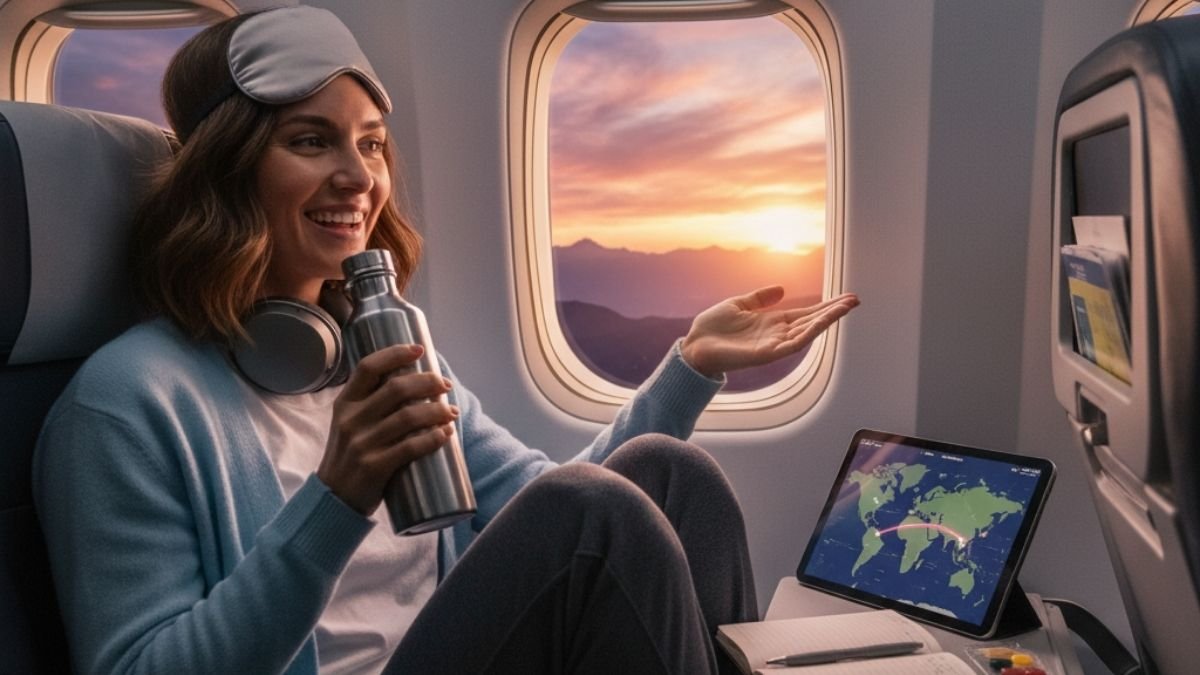
You’ve saved, you’ve planned, you’ve spent a dozen hours crammed in a metal tube. You land in Paris at 9:00 AM. You can smell the croissants. You should be excited.
But you’re not. You’re a zombie. Your eyes feel like sandpaper, your brain is wrapped in cotton wool, and all you can think about is finding the nearest dark room. Your body is screaming that it’s 3:00 AM, and it wants to know what, exactly, you think you’re doing.
That’s jet lag. And it’s the ultimate thief of vacations and the saboteur of business trips. For so long, we’ve just accepted it as the price of travel. We try to “fix” it after we land, chugging coffee and staggering through the first few days in a fog.
But what if that’s completely backward? What if the real work of beating jet lag happens before you even lock your front door?
As Dr. Cheri D. Mah, a sleep physician at Stanford Lifestyle Medicine, puts it, “Most people just jump on an airplane and then try to adjust their body clock after they arrive, which is not really a plan. Instead, we can be more proactive”.
And it’s a real problem—one survey found 68% of international business travelers feel the negative effects of jet lag regularly. This isn’t just in your head.
Here’s the plan. These eight tricks are about proactively priming your body for the new time zone. This way, you don’t just travel; you arrive ready.
First, Why Is This So Much Worse Than Just Being “Tired”?
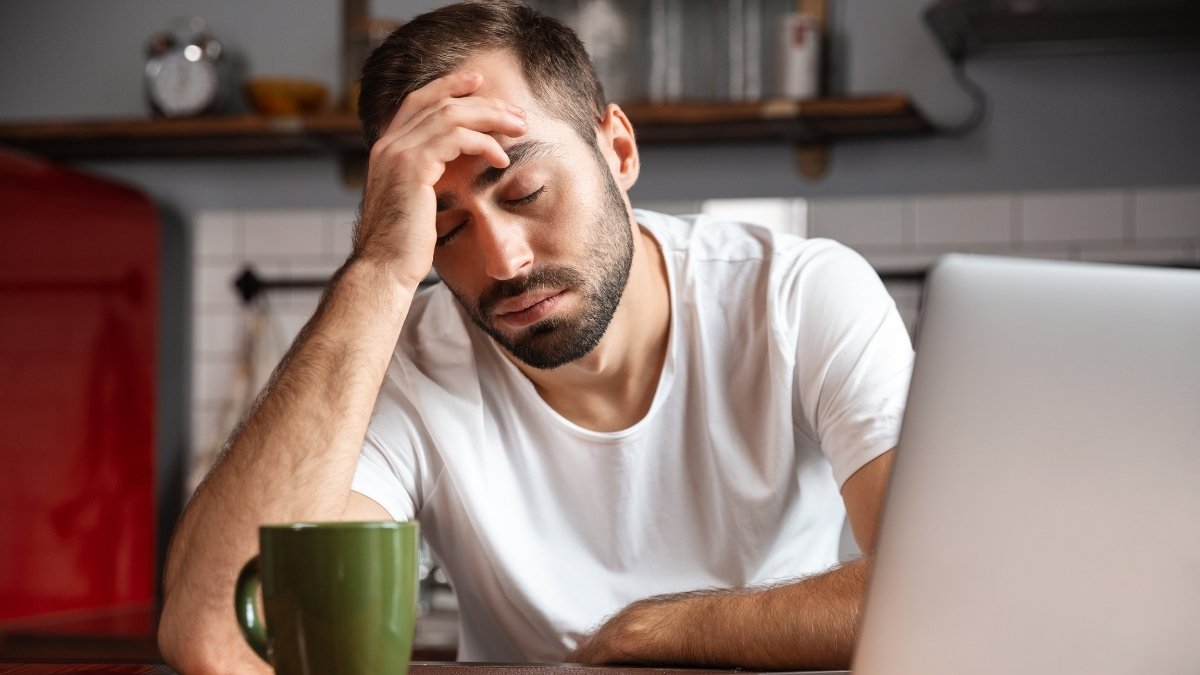
Look, we’ve all been “travel tired.” That’s the physical exhaustion from hauling bags, the stress of the airport, and sitting in a dry, cramped seat for hours. You can get that on a long flight from north to south without ever crossing a time zone.
Jet lag is different. It’s a recognized, diagnosable circadian rhythm sleep disorder.
Here’s what I mean: Deep in your brain, you have a “master clock” (its science-y name is the Suprachiasmatic Nucleus, or SCN). Think of it as the CEO of your body. It gets its primary information from light. Based on that light, it tells your body, on a 24-hour cycle, when to sleep, when to wake up, when to be hungry, and when to release hormones like melatonin (for sleep) and cortisol (for wakefulness).
When you cross time zones, the world changes, but your clock doesn’t. Your CEO is still on “home time.”
It’s releasing melatonin right when you’re supposed to be bright-eyed for a meeting. It’s firing up your digestive system when the new city is fast asleep. This mismatch is what causes the classic symptoms: awful insomnia, crushing fatigue, brain fog, irritability, and even gastrointestinal chaos.
Understanding this—that it’s a biological clock problem, not a personal failing—is the key to fixing it.
The Golden Rule: East Is a Beast, West Is Best

You’re not crazy: it is harder to fly from the U.S. to Europe than from the U.S. to California. About 75% of people report that eastward jet lag feels worse, and science backs this up.
Here’s why. It turns out your body’s natural internal clock doesn’t run on a perfect 24-hour cycle. For most of us, it’s actually a little longer—think 24.2 to 25 hours.
This gives your body a natural, tiny bias: it finds it easier to stay up a bit later and wake up a bit later (a “phase delay”).
- Traveling WEST (e.g., New York to LA): You “gain” time. The day gets longer. You need to stay up later. This works with your body’s natural tendency. It’s biologically easier, so you adapt faster (at a rate of about 1.5 time zones per day).
- Traveling EAST (e.g., New York to London): You “lose” time. The day gets shorter. You have to force your body to go to bed earlier than it wants to. This fights against your body’s programming. It’s biologically difficult, so you adapt more slowly (only about 1 time zone per day).
This “east-west” rule is the most important variable. Your strategy for beating jet lag must be based on your direction of travel.
Your 8-Point Pre-Flight Plan to Arrive Ready
This is the good stuff. Start this 3-4 days before your flight.
Trick 1: Start Time-Traveling at Home

This is the single most powerful thing you can do. Don’t try to absorb a 6-hour time shock in one day. That’s just… ouch. Instead, you “distribute” the shock over a few days.
The How-To: Starting 3 days before you leave:
- Traveling EAST (The Beast): Go to bed 30-60 minutes earlier each night. And—this part is critical—set your alarm and wake up 30-60 minutes earlier each morning.
- Traveling WEST (The Best): This is easier. Go to bed 30-60 minutes later each night. Let yourself wake up 30-60 minutes later each morning.
By the time you leave for your New York to London flight, your body is already 2-3 hours closer to London time. You’ve done half the work while sleeping in your own bed.
Trick 2: Become a Master of Light
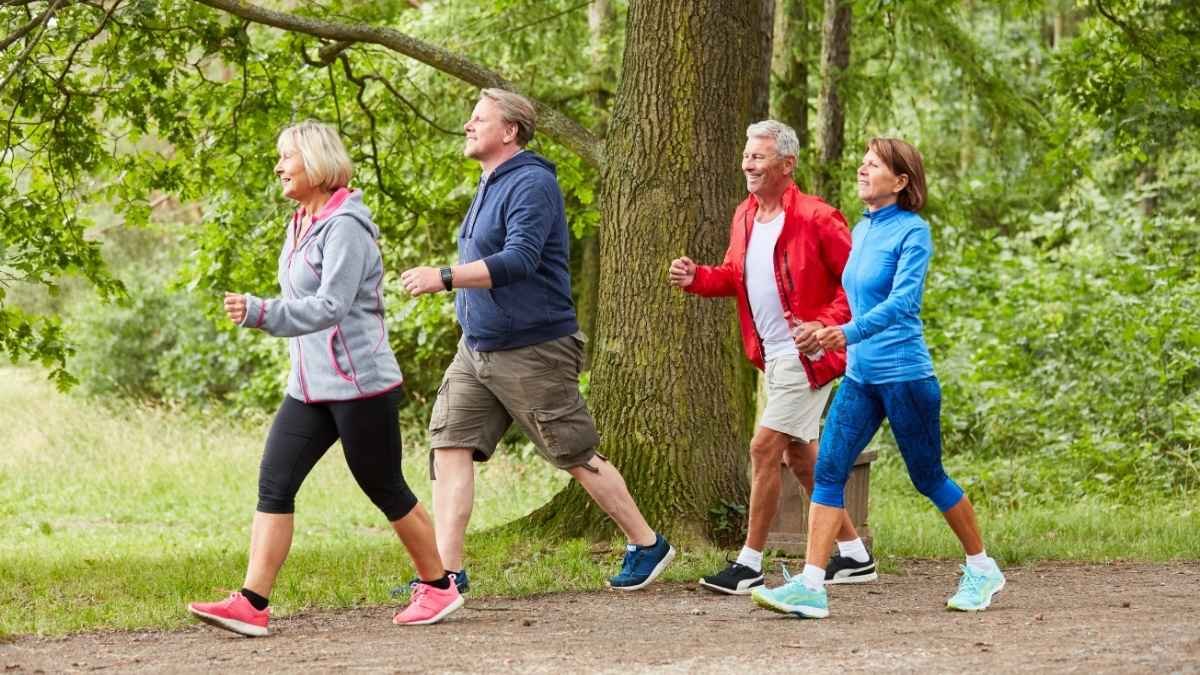
Here’s the catch: Trick 1 will fail if you don’t do this.
Waking up early in a dark room is just called “sleep deprivation.” It doesn’t shift your clock. You have to prove to your brain’s CEO that it’s “morning”. The signal? Bright light.
The How-To (Paired with Trick 1):
- Traveling EAST: The second your (newly-early) alarm goes off, you must get at least one hour of bright light. Go for a walk. Sit by a sunny window. Use one of those artificial bright light therapy lamps. This bright light “pulls” your clock earlier. Then, in the evening, be a vampire. Dim the lights, put on blue-light-blocking glasses.
- Traveling WEST: Do the opposite. You need to avoid morning light. I’m serious, wear sunglasses indoors if you have to. This stops your clock from “advancing.” Then, in the late afternoon and evening, seek bright light. This “pushes” your clock later.
Trick 3: Use Melatonin (But Not Like a Sleeping Pill)

This is the one everyone gets wrong. Melatonin is not a sedative like Ambien. It’s a chronobiotic—a “time-signaling” hormone.
Its job isn’t to knock you out; its job is to signal “darkness” to your master clock. As Dr. Luis F. Buenaver, a Johns Hopkins sleep expert, says, it “doesn’t make you sleep, but as melatonin levels rise… it puts you into a state of quiet wakefulness that helps promote sleep”.
We’re going to use it to help shift the clock.
The “How-To” (Dose): Less is more. For shifting your clock, the effective dose is tiny: 0.3 mg to 1 mg.
The Common Mistake: “Unfortunately, most melatonin sold over-the-counter is available in doses ranging from 3 milligrams to 10 milligrams, which is much more than your body needs,” says Dr. Michelle Drerup, a sleep specialist at Cleveland Clinic. Those high doses just make you groggy and can “spill over” into the next day, confusing your clock even more.
The “How-To” (Timing): To help with that pre-travel eastward shift, take your tiny 0.5mg-1mg dose a few hours before your new, earlier target bedtime. This helps “pull” the clock forward.
The Warning: Melatonin is a hormone, not a vitamin. It can interact with other medications (like those for blood pressure, diabetes, or anticoagulants like warfarin). It’s generally safe for short-term use, but check with your doctor.
Trick 4: Pre-Hydrate Like a Pro Athlete

This one bridges the pre-travel and in-flight plan. It’s simple: that “travel fatigue” (the dried-out, headache-y, stiff feeling) makes jet lag symptoms feel a thousand times worse.
The air in a plane cabin is exceptionally dry—often below 20% humidity, which is drier than a desert. This, plus the diuretic (water-losing) effects of caffeine and alcohol, is a recipe for dehydration.
And as the CDC notes, dehydration “can worsen physical symptoms of jet lag” like fatigue and headaches.
The How-To:
- Pre-Flight: Start “pre-hydrating” 24 hours before you travel.
- In-Flight: Don’t rely on those tiny cups. Bring a big, empty, reusable water bottle and have it filled after security.
- The Rule: Drink water. Constantly. Even when you’re not thirsty. One great tip is to aim for a glass of water or herbal tea every hour of the flight.
Trick 5: Ditch the In-Flight “Nightcap”

I know. I know. That free glass of wine is so tempting. You’re thinking, “It’ll help me sleep!” We’ve all been there. And we’ve all been wrong. That “nightcap” is one of the worst mistakes you can make. Here’s why:
The CDC is very clear on this. Alcohol does help you fall asleep faster (it “reduces sleep latency”), but it significantly “increases [s] sleep fragmentation”.
In plain English: It helps you pass out, but it destroys the quality of your sleep. It especially suppresses REM sleep, the restorative part. You wake up unrefreshed.
And… It’s a diuretic. So it’s a “double whammy”: it dehydrates you (worsening Trick 4) and it fragments your sleep. Swap it for water or a non-caffeinated tea.
Trick 6: Move Your Body (Even in Seat 17B)

This is another one for “travel fatigue,” not jet lag itself. But again, when you feel better physically, you can handle the clock shift mentally.
Sitting for 8 hours is terrible for your body.
- Tightness: Your hip flexors get short and tight, which pulls on your lower back, causing that “airplane back-ache”.
- Poor Circulation: Blood pools in your lower legs. This causes the swollen ankles and general “ugh” feeling.
The How-To:
- In the Seat: You don’t need to do yoga. Just do simple moves every hour.
- Ankle Circles: Lift a foot, roll it around 10 times each way.
- Foot Pumps: With heels on the floor, lift your toes. With toes on the floor, lift your heels. This activates your calf muscles, acting as a “second heart” to pump blood up.
- Knee Lifts: Lift one knee to your chest, hold, and lower.
- Seated Twists: Gently twist to keep your spine mobile.
- In the Cabin: When the seatbelt sign is off, get up. Walk to the back. Stretch.
- Pro-Tip: This is what compression socks are for! They’re not just for your grandma. They gently squeeze your legs to prevent swelling and fatigue.
Trick 7: Hack Your Senses (The “Bubble” Protocol)
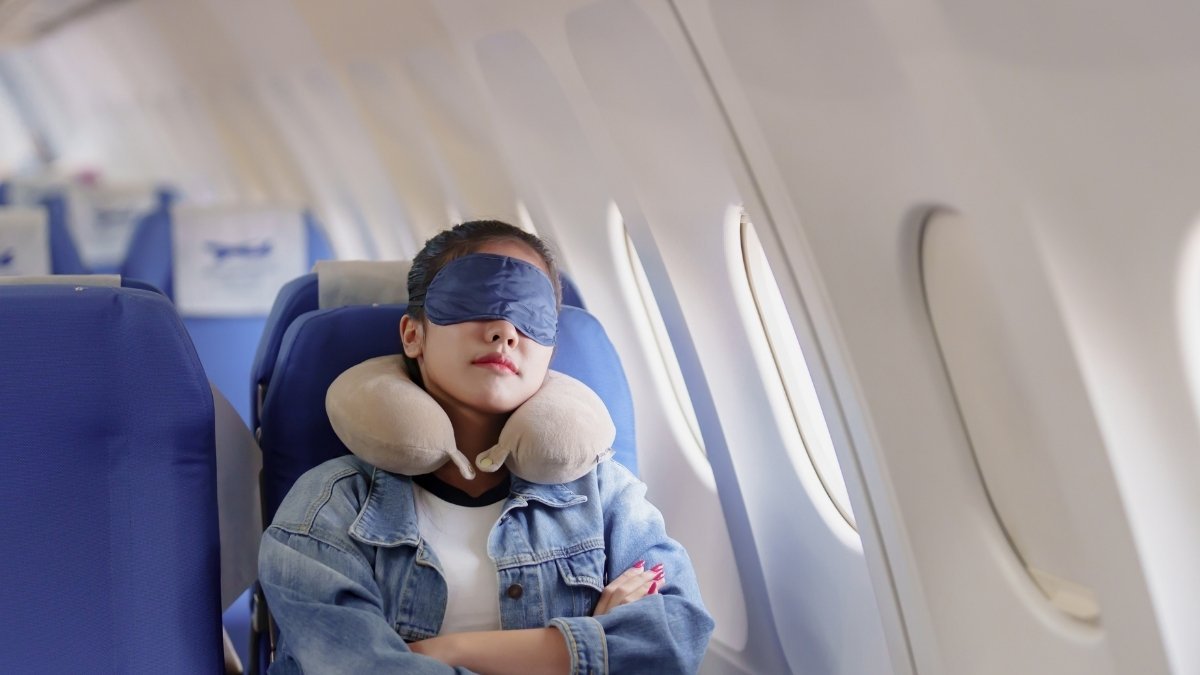
This is where you reframe your eye mask and earplugs. They aren’t just “comfort items”; they are critical scientific tools for controlling your clock.
The How-To:
- The moment you get on the plane, set your watch to your destination time.
- From that second on, you live in that time.
- If it’s 10:00 PM in London (your destination), then it is bedtime. I don’t care that it’s 5:00 PM New York time. I don’t care that the sun is streaming in the window and the flight attendant is serving dinner.
- At 10:00 PM “London time,” you put on your eye mask and earplugs.
The “Why”:
- The Eye Mask: This is active light avoidance. It’s the critical other half of Trick 2. You are creating a “portable night”. By blocking all that ambient light, you are sending the only signal your brain understands that it’s dark, allowing your natural melatonin to be released.
- The Earplugs: These just create a quiet “bubble” that stops noise from fragmenting the (precious) sleep you do get.
You are actively creating the destination environment right there in your seat.
Trick 8: Download Your “Circadian Co-Pilot”

Okay, let’s be honest. Timing the light, the darkness, and the melatonin is… complicated. And if you get the timing wrong (like getting bright light when you should be avoiding it), you can actually make your jet lag worse.
The How-To: Don’t guess. Use a “jet lag calculator” app (like Timeshifter or StopJetLag).
The “Why”: This isn’t a gimmick. The CDC literally suggests travelers “consider use of a jet lag calculator to personalize recommendations”. Many of these apps are built by sleep scientists using the same circadian models that NASA uses to help astronauts.
How They Work: You plug in your flight, your home sleep schedule, and even your “chronotype” (if you’re a night owl or morning lark). The app then generates a simple, hour-by-hour plan for the days before, during, and after your flight. It’ll just buzz your phone and say:
- “Seek bright light now.”
- “Put on sunglasses now.”
- “Consider 0.5mg melatonin.”It’s the easy button for all the science we just talked about.
Your First 24 Hours: How to “Lock In” the Win
You did all this work. You’ve landed. Don’t blow it now!
- 1. Immediately get on the Local Light Schedule: Light is still your #1 tool. Arrived in London in the morning? Drop your bags and get outside. That bright, local morning light will “lock in” the new schedule. Arrived in LA in the afternoon? Get that late-afternoon/early-evening sun.
- 2. Obey the 30-Minute Nap Rule: You’re going to be tired. It’s fine. If you must nap, keep it to 30 minutes or less: A long, 2-hour nap is tempting, but it’s disastrous. It releases all your “sleep pressure,” making it impossible to fall asleep at your new, local bedtime.
- 3. Move Your Body (Again): Go for a brisk walk. This is a 2-for-1: it’s light exercise, and it gets you that all-important (local) light exposure. Some studies even show that exercise can help: morning exercise may advance your clock (perfect for eastward travel), while evening exercise may delay it (great for westward travel).
- 4. Eat on Local Time: Meals are a “secondary” clock-setter. Even if you’re not hungry, try to eat a light meal at the local time. It helps signal to the rest of your body’s systems (like your gut) that a new schedule is in effect.
A Few Gadgets to Make It Even Easier
All these tricks are about managing your body, but let’s be real—the right gear can make “managing” feel a lot more like “relaxing.” You don’t need any of this stuff, but if you’re a frequent traveler, investing in a few key items can be a total game-changer for your comfort. Here are a few things that are genuinely helpful for putting those in-flight tricks into practice.
1. Liquid I.V. Hydration Multiplier

Remember Trick #4 (Hydration)? Plane air is drier than in a desert. Tossing one of these electrolyte packets into your water bottle is a lot more effective than just drinking plain water. It helps you hydrate faster and stay hydrated.
2. Sockwell Circulator Compression Socks
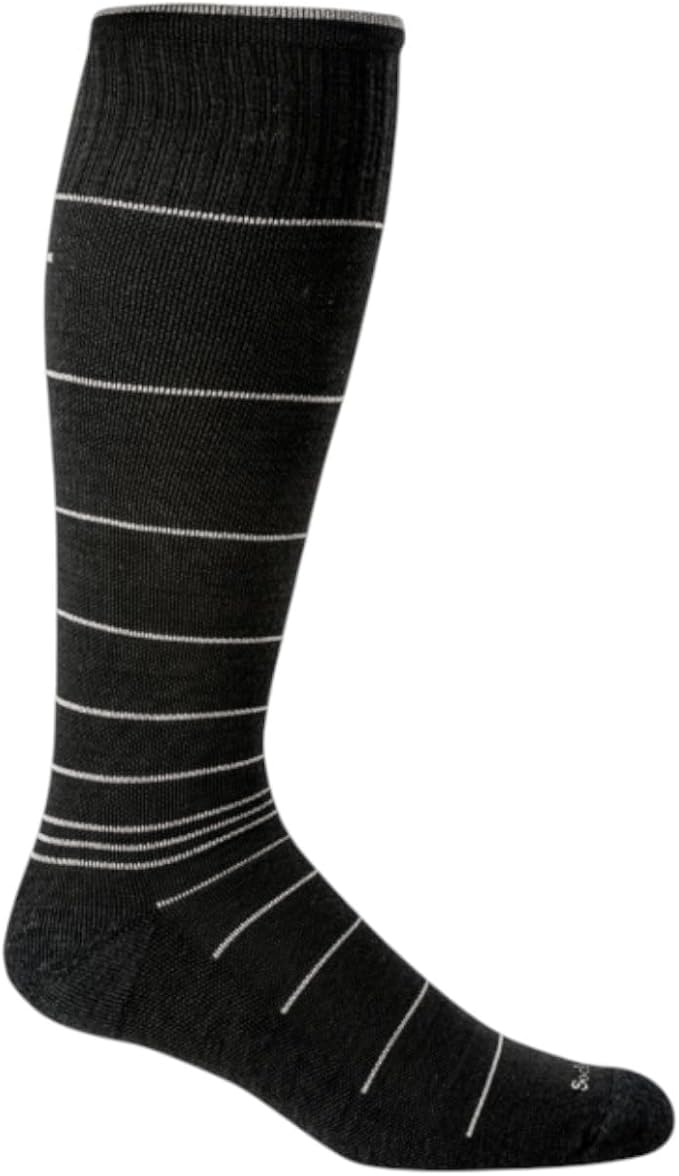
For Trick #6 (Movement), these are key. Sitting that long makes your legs swell and feel heavy. Compression socks help keep your circulation moving. You’ll be amazed at how much less “blah” you feel when you land. These ones from Sockwell are highly recommended.
3. TRTL Travel Pillow

This is for Trick #7 (Sleep), and it’s not your usual U-shaped pillow. It’s more like a structured scarf that holds your head in a much more natural, ergonomic position. If you’re a head-bobber who can never get comfortable, this can be a lifesaver.
4. Travelrest Nest Ultimate Memory Foam Pillow
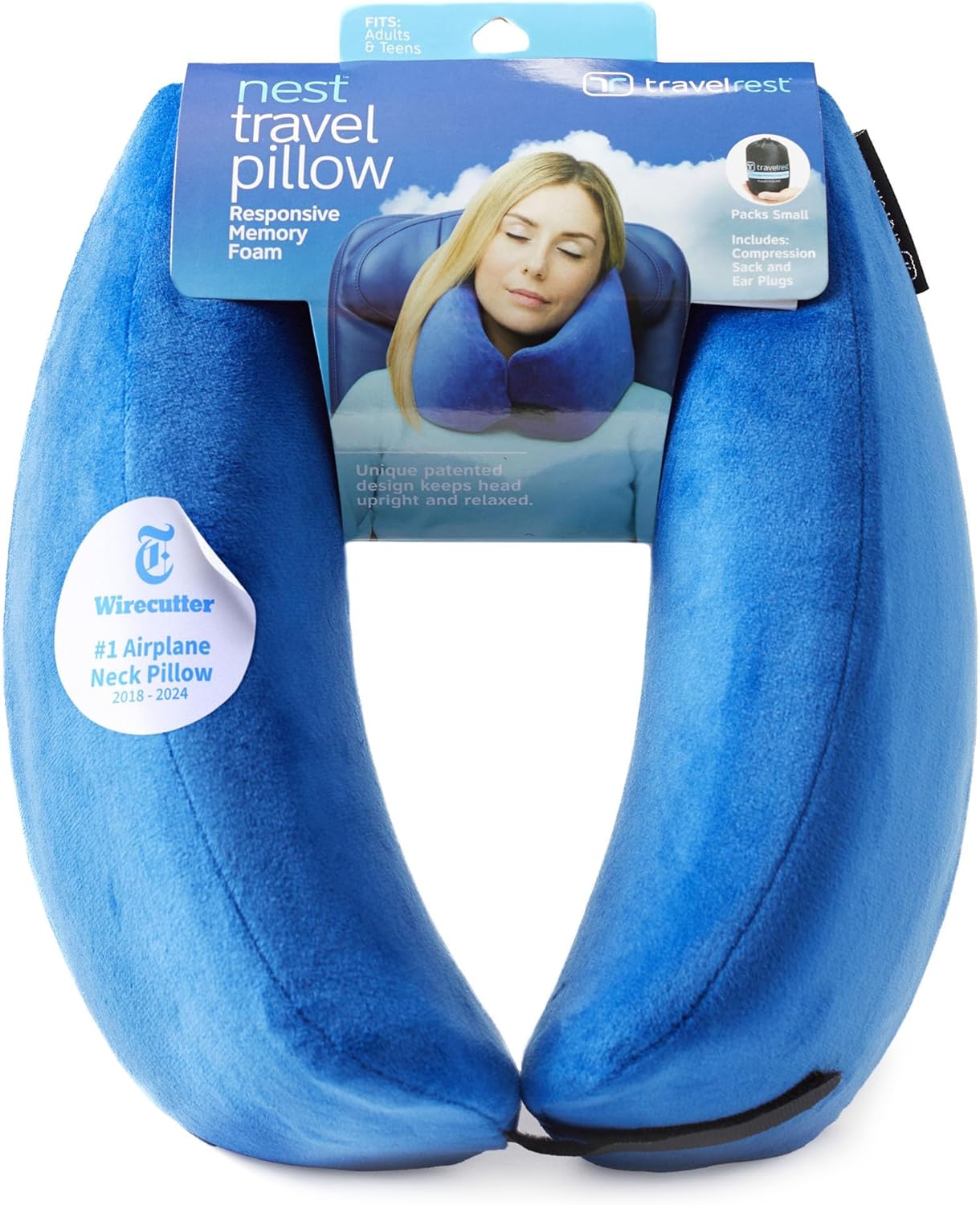
If you prefer a more traditional pillow, this memory foam one is a top pick. It gives you that classic, 360-degree support to help you lean back and actually get some rest.
5. AirComfy Ease Inflatable Travel Pillow

The best part about this one is how small it packs down. You get solid support when you need it, but it doesn’t take up half your carry-on. Great if you’re trying to travel light.
You’ve Got This
Jet lag is a real, biological disorder. But it’s not an inevitable tax on travel.
The whole secret is shifting your mindset—from reacting to the misery after you land, to proactively managing your body’s clock before you even leave.
Your vacation doesn’t have to start with three “zombie days.” It can start the moment you step off the plane. All it takes is a little planning. Arrive ready.





